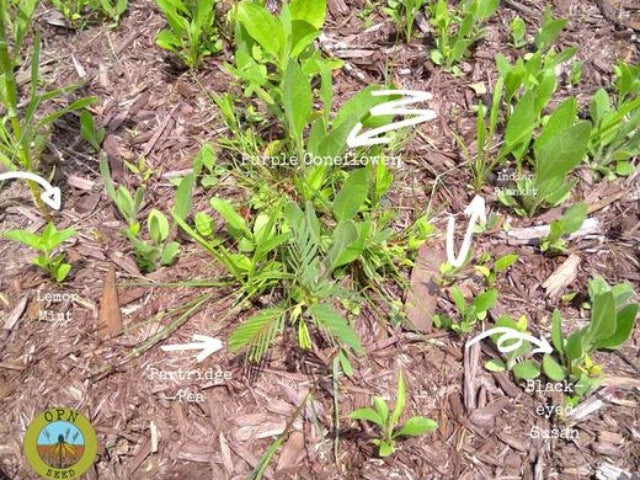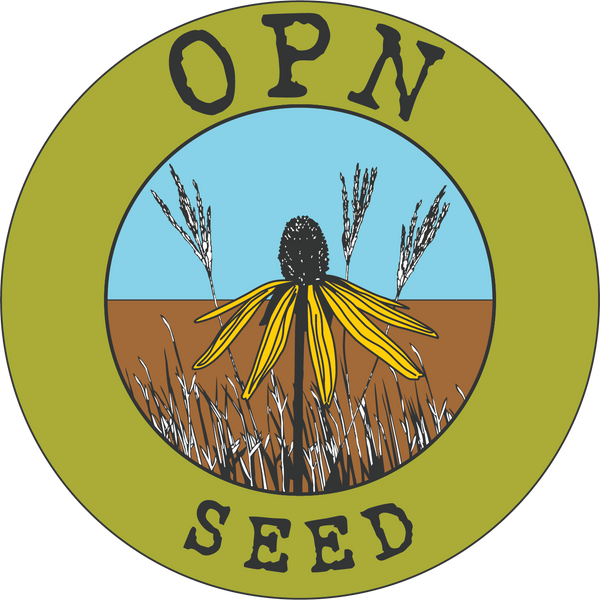
First Year Native Seedings: The Sequel
Share
Alright folks...I'm sure you were waiting for the follow-up on first year seedings, so here we go! Below is a photo that shows the current growth of the plot.

As you can see, the growth is still slow. This is typical for the first season and can be from a variety of factors including the mulch source. We used a typical bagged mulch from a local hardware store for this case study. We purposely did this to show how the seed may react to a mulch that is not ideal. It is always better to get your mulch from a local source that grinds it themselves.
We see Purple Coneflower, Black-eyed Susan, Partridge Pea, Indian Blanket and Lemon Mint in this photograph. We drew some arrows on the picture from above to help show which is which. Each mix composition varies, but these are species you would expect to see the first year. Most of the perennial species put down roots the first year or two and will not emerge this season. We used our Ohio Pollinator Oasis Seed Packet for this study.
For our plot, I am still not doing any management. We have a few turf weeds creeping into the plots but nothing that is too concerning. Trying to cut them down or pull them would do more harm then help at this point. No two sites will look the same as far as desirable and undesirable plant growth. If you have dense and taller undesirable plants in your plot, you can cut the tops off, bag and remove them from the site. Do not try to pull them out as you hardly ever get all the root and the soil disturbance may have a negative effect on the native plants. Cutting the weeds back allow sunlight and rain to better reach the shorter native plants that are trying to establish.
If you are in doubt of what to do, don't do anything. If you are going to cut plants back and remove them, make sure you know what they are. I will be back in a couple of weeks with an update status and further recommendations.
